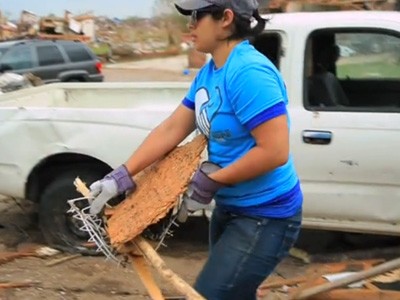Back-to-back natural disasters in the form of the Philippines’ Typhoon Haiyan – one of the largest such storms ever recorded – and the tornadoes that devastated Illinois and other parts of the Midwest this past weekend, leading to an as-yet-to-be-determined number of fatalities, offer a glimpse into several industries, from home building and insurance to specialized disaster planning and recovery niches.
Whether you’re in an area fraught with storm damage, or not, you likely can find an economic tie to these or possibly future natural disasters. Obviously, you can connect with major employers, large companies and organizations like health systems in your area to discuss disaster and recovery planning; the most organized seem related to information technology and telecommunications; here’s the National Association of Systems and Recovery Professionals, for example. But pretty much every industry has its vulnerabilities, from agriculture to construction to trucking. What sort of plans, drills and strategies are in place at the companies you cover? And what sort of careers are out there in the specialty of handling the unexpected?
In the immediate aftermath, I think debris is one of the best bets for a business piece. The photos of storm wreckage in both the Philippines and Illinois are staggering; piles and piles of building materials, human possessions, trees and mementos cast far and wide — one report says a windblown wedding photograph traveled some 90 miles from its owner’s home near Peoria to where a stranger found it in Joliet. (One resourceful woman already has started a Facebook page dedicated to reuniting storm-tossed owners with their subjects; you might use this theme as a springboard to look into the consumer angles of digital image storage, document storage and recovery.)
On a larger scope, what happens to all this stuff? Someone is going to have to haul away the junked cars, beat-up refrigerators, wood, concrete, drywall, rain-soaked furniture and other cast-off materials littering the storm scenes. Apparently some firms specialize in “disaster debris,” as it’s known; this company, Crowder, says it also has an extensive list of subcontractors; maybe they will help you find some in your region who may be heading to the tornado zone or even overseas. Contact area landfill operators and your region’s representatives of the Environmental Protection Agency — apparently regional disaster debris removal plans are in place so they would be able to direct you to contractors and other specialists. No matter what your beat there’s an angle in there somewhere — what happens to biohazards from a medical site, for example, or damaged retail merchandise, or fried electrical components from households and power stations?
In additon to clean-up, there are special considerations, like hazardous waste handling, that can merit a business feature or consumer advisory piece. And get this: there’s a green way to go about cleaning up after a bad storm; here is an article from the Sundance Channel about scrap collectors cashing in after a 2011 tornado and a WXYZ piece about re-using debris from a 2012 tornado in my neck of the woods; even tar paper from roofs was slated to be used in materials for road repairs. Household appliances probably are a biggie, too.










